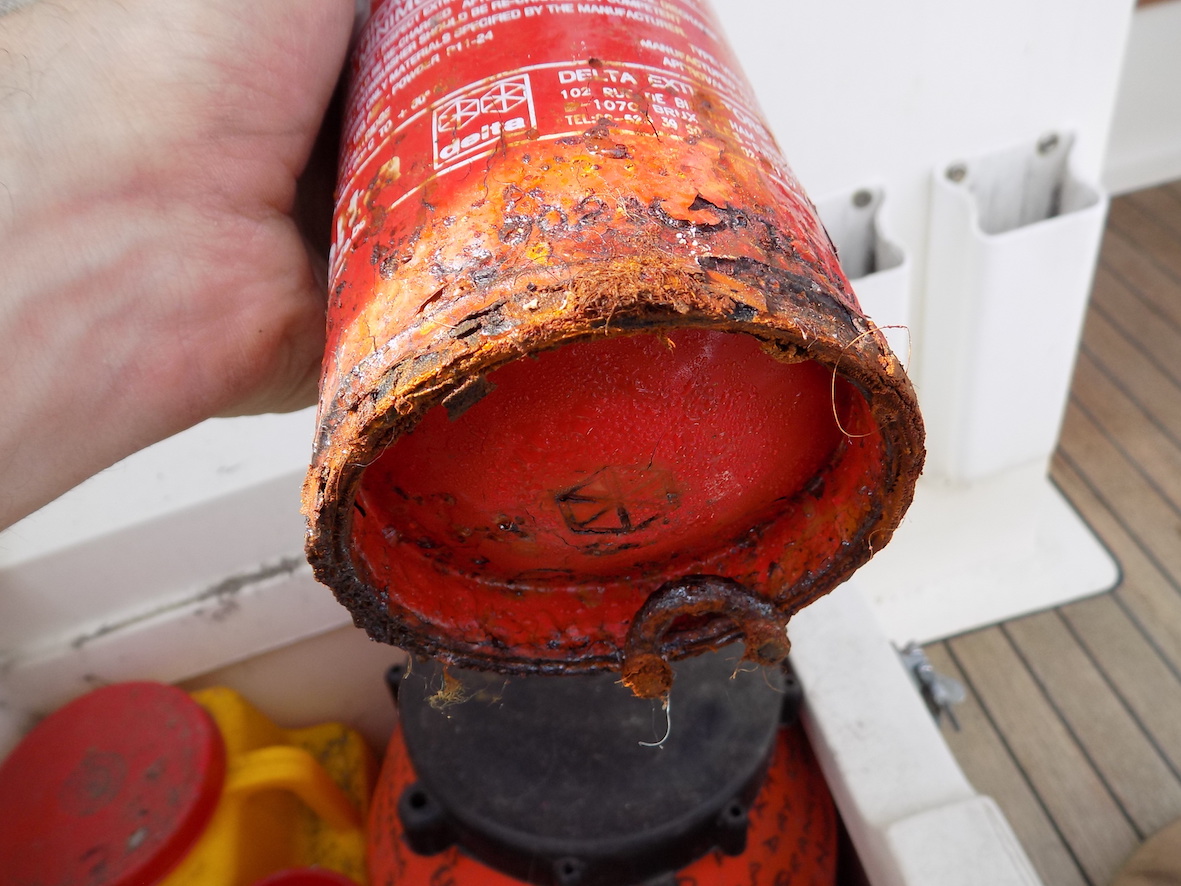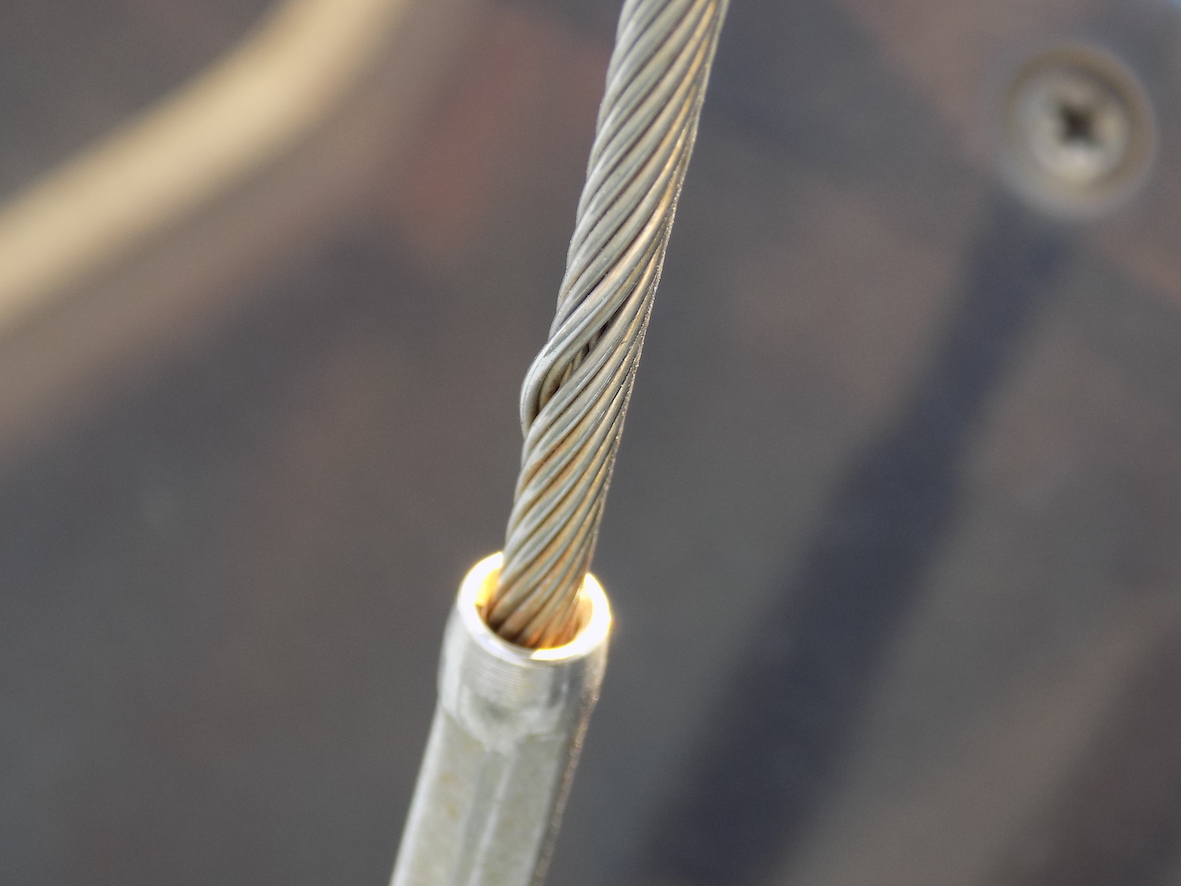YSC Blog
Fire Extinguishers
24 January, 2017
Fire extinguishers are one of those items like most safety items that you only use when you really, really need them! I have surveyed many boats with extinguishers that are out of date and often have no pressure in left in the bottle so they are only good for ballast and in the case of the extinguisher in the picture, not even safe for that.
As a guide, extinguishers should be serviced annually to make sure there is no corrosion, that there is pressure in the bottle, and the powder has not 'caked' solid in the bottom. They should also be replaced every 5 years.
Getting only a few extinguishers serviced can be difficult as its not worth the engineers time to for the benefit. However most boats are kept in marinas and yacht clubs that all need extinguishers on the pontoons serviced so why not speak to the yard manager or secretary to see if yours could be done at the same time. If that is too difficult to arrange maybe a few boats clubbing together to bring a service engineer down would be more economical.
Standing Rigging
9 January, 2017
Standing rigging are the wires and lines that hold the masts and spars in place. These days they are nearly always made from stainless steel wires and secured in swaged fittings because they are are strong and relatively reliable. However most insurance companies give standing a rigging a service life - normally about 10 years. After this period the rigging is considered outside of its service life and therefore may well not be covered in the event of an insurance claim.
During a survey I will inspect the rigging as far as possible without the mast being lowered. This includes checking all the wires in the cable, the swages and bottle screws. Sometimes wires can become damaged such as the one in the image above and these are obvious to spot however, the danger often lies within the swage. This is because stainless steel is only stainless when its in the presence of oxygen which gives is the oxide layer on the surface that prevents corrosion. Inside a swage the oxygen can become depleted and so the stainless steel can now corrode, unseen and giving no warning. The insurance companies look at the data for rigging claims and know that after 10 years, claims increase so they take the obvious step of giving it a service life although this not normally written down anywhere. It is for this reason the rigging should be replaced every 10 years.


